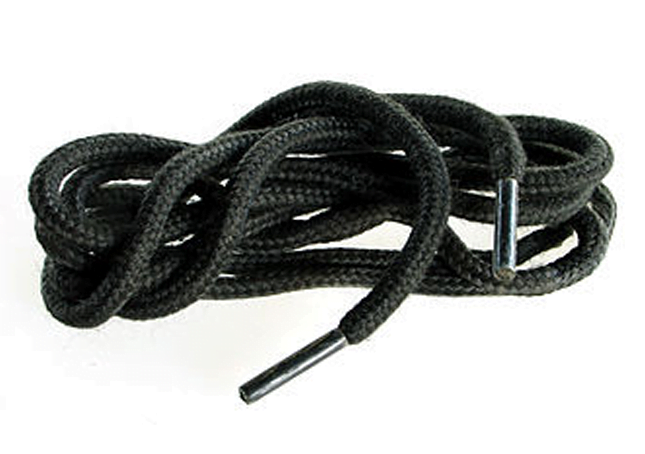Shoelaces

Shoelaces, also called shoestrings (US English) or bootlaces (UK English), are a system commonly used to secure shoes, boots, and other footwear. They typically consist of a pair of strings or cords, one for each shoe, finished off at both ends with stiff sections, known as aglets. Each shoelace typically passes through a series of holes, eyelets, loops or hooks on either side of the shoe.
Loosening the lacing allows the shoe to open wide enough for the foot to be inserted or removed. Tightening the lacing and tying off the ends secures the foot firmly within the shoe. The laces can be tied in different shapes, most commonly a simple bow.
Traditional shoelaces were made of leather, cotton, jute, hemp, or other materials used in the manufacture of rope. Modern shoelaces often incorporate various synthetic fibers, which are generally more slippery and thus more prone to coming undone than those made from traditional fibers. On the other hand, smooth synthetic shoelaces generally have a less rough appearance, suffer less wear from friction, and are less susceptible to rotting from moisture. Specialized fibers like flame resistant nomex are applied in safety boots for firefighters.
There are also various elasticized shoelaces:
Traditional “elastic” laces look identical to normal laces, and can simply be tied and untied as normal. They may also come with a permanent clip so they can be fastened invisibly.
“Knotty” laces have a series of “fat” sections, which restrict movement through eyelets. These can be used to adjust tension throughout the lacing area. These laces can be tied or the ends can be left loose.
“Twirly” laces are like a tight elastic helix, which can simply be pulled tight without requiring a knot.
Elastic laces both make the lacing more comfortable, as well as allowing the shoe to be slipped on and off without tying or untying, which makes them a popular choice for children, the elderly and athletes.
The stiff section at each end of the shoelace, which both keeps the twine from unraveling and also makes it easier to hold the lace and feed it through the eyelets, is called an aglet, also spelled aiglet.
Shoelaces with a flat cross-section are generally easier to hold and stay tied more securely than those with a round cross-section due to the increased surface area for friction.[1] Very wide flat laces are often called “fat laces”. Leather shoelaces with a square cross-section, which are very common on boat shoes, are notoriously prone to coming undone.
Shoelaces can be coated, either in the factory or with aftermarket products, to increase friction and help them stay tied.
